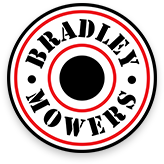Spring yard cleanup checklist
One secret to cleaning up the yard is knowing that cleanup done for the spring should a be started in the late winter, as cleanup for winter is best started in the fall. So now is the best time to prepare the yard for the warmer weather. The following is a spring yard cleanup checklist:
Literally, Clean Up
Unless the gardener is the sort who likes to let fallen leaves naturally decompose into the soil, the piles of dead leaves, twigs, fallen branches and other debris need to be raked up from the yard. If the gardener is sure that the leaves are disease free, they can bag them up, and use them as compost or mulch. But the plastic bags, plastic bottles, candy wrappers and other trash that have found their way onto the lawn need to be discarded.
According to experts, the best tool to take up dead leaves and debris is a bamboo rake. The most efficient way to use it is to sweep it across the body instead of pulling it. To keep the tines supple, soak them in water over night every few months.
Prune Some Flowering Shrubs
Snip off the dead twigs on perennial plants and prune those flowering shrubs best pruned in late winter or early spring. They include:
• Flowering abelia
• Hibiscus
• Hydrangeas
• Sweetspire
• Crepe myrtle
It’s also time to cut back diseased or insect infested branches to healthy tissue, and remove branches that have been killed or damaged by winter. Cut off suckers that grow at the roots of the trees because they steal nutrients, and cut off water sprouts, which grow straight up from a branch. They don’t produce fruit or flowers and are useless.
Flower Beds
If the soil in established flower or vegetable beds did well during the last growing season, add some compost and weed. In late winter most weeds are tiny and easy to pull up. If the gardener is interested in new beds, their best bet is to install raised beds. Raised beds let the gardener control the type of soil and are easy to weed. Since they are raised even a few inches, the gardener doesn’t need to do as much bending. Plants in raised bed also get a bit more sunlight.
Other ways to create new beds are to use a tiller over a specified area, then smother the grass and weeds with landscape fabric or black plastic until it’s time to plant.
Tidy the Lawn
Dig up and discard areas of the lawn that have been damaged during the winter with a metal rake. Amend the area with compost, and add emergent weed killer. Start overseeding the area a couple of weeks later.
Repair Pathways
In some places winter is really murder on pathways made of stone or concrete. Fill in cracks or have the paver removed if it is really badly damaged. Make sure to treat the bed before installing another paver. If gravel has been kicked out of the joints between the pavers, rake it back in, and blast away stains and fungus with a pressure washer.
